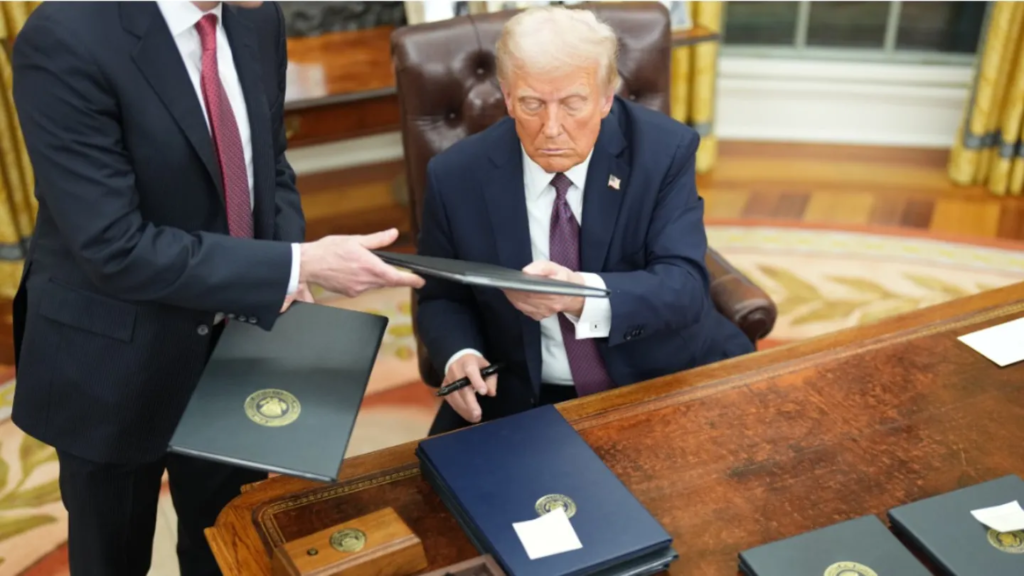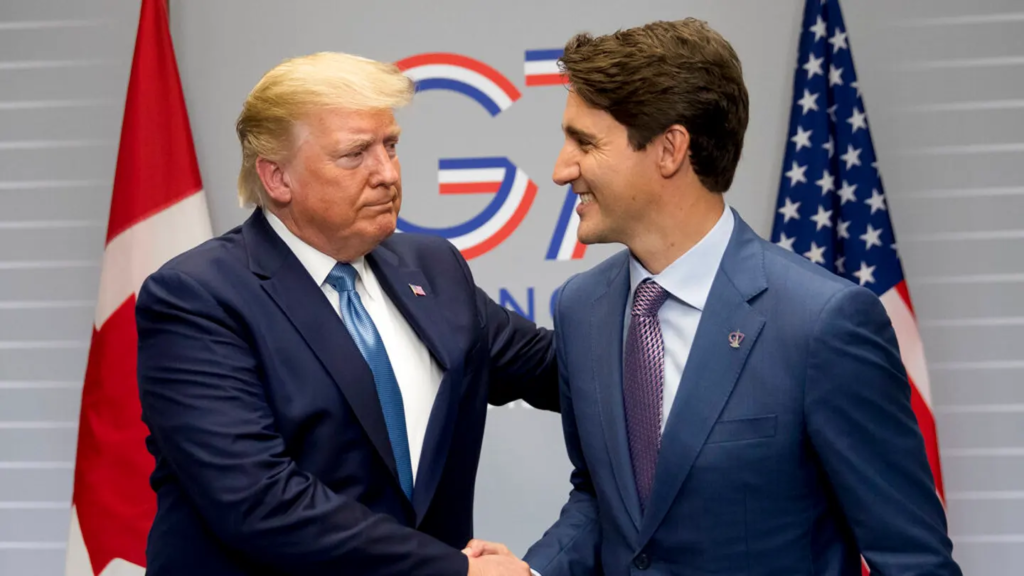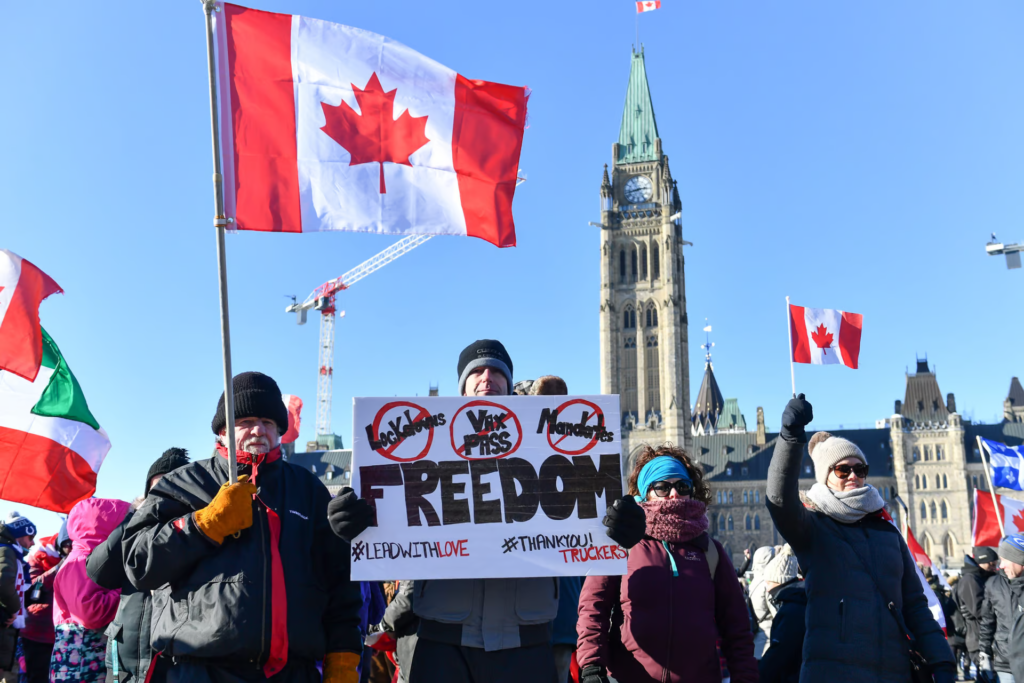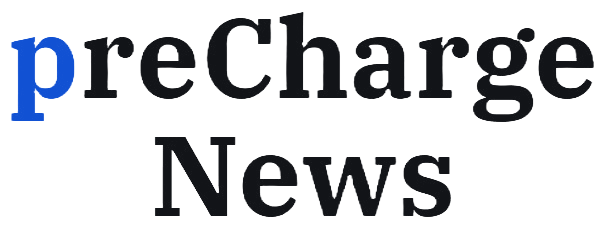
OTTAWA — On his first day back in office, President Donald Trump reignited tensions with Canada by signing an executive order threatening 25% tariffs on imports from its northern neighbor. Canadian leaders, from federal to provincial levels, have vowed to fight back, with plans for robust retaliation already in place.
Speaking to reporters in the Oval Office on January 20, Trump said the tariffs would target Canada and Mexico due to their alleged roles in illegal migration and fentanyl trafficking. He indicated the measures could take effect as soon as February 1.
“Because they’re allowing vast numbers of people and fentanyl to come in, we’re going to impose tariffs,” Trump declared. “I think we’ll do it by February 1, but if not, certainly by spring.”
The executive order, part of the new “America First Trade Policy,” directs federal agencies to assess migration and drug flows from Canada, Mexico, and China. Based on those findings, additional trade and national security measures could be implemented by April 1.

Canada Readies a Dollar-for-Dollar Response
Canadian leaders wasted no time responding to Trump’s tariff threats. Outgoing Prime Minister Justin Trudeau, set to leave office on March 9, promised a strong countermeasure.
“Canada will have a strong, robust response,” Trudeau told reporters on Parliament Hill. “And if these tariffs go through, prices for American consumers will rise significantly. I don’t think Trump wants that.”
Trudeau disputed the accusations regarding migration and fentanyl, citing data that shows less than 1% of both illegal drugs and migrants entering the U.S. come from Canada. He also highlighted Canada’s $904 million investment in border security and immigration improvements.
Ontario Premier Doug Ford echoed Trudeau’s stance, vowing to impose counter-tariffs worth $26 billion on U.S. goods if the measures move forward. “Canada’s response will be dollar-for-dollar, tariff-for-tariff,” Ford said.
Targeting U.S. Goods in Retaliation
Canada’s retaliatory plan would hit key U.S. products. The Canadian government reportedly plans to target orange juice from Florida and bourbon from Kentucky—home states of prominent Republicans, including Senate Minority Leader Mitch McConnell.
Ford has already taken steps at the provincial level, ordering Ontario’s Liquor Control Board to remove U.S. alcohol from its shelves should the tariffs proceed.
At a news conference Friday, Ford announced plans to call an election on February 27. He seeks a strong mandate to “fight against Donald Trump’s tariffs” and “protect Ontario’s families, businesses, and communities.”

Economic Fallout and Calls for Unity
Trump’s claims about a trade deficit with Canada have also sparked debate. During a virtual address at the World Economic Forum in Davos, Switzerland, he accused Canada of causing a $200 billion to $250 billion trade imbalance.
However, a recent TD Economics report paints a different picture. The U.S. runs a $45 billion trade deficit with Canada, largely due to energy imports. If energy is excluded, the U.S. actually has a trade surplus.
“Without energy, the U.S. benefits more from trade with Canada,” Ford noted, adding that Canada should consider diversifying its energy exports.

Former Conservative Prime Minister Stephen Harper weighed in, saying, “Canada subsidizes the U.S. in this regard. Maybe it’s time for Canadians to explore other markets for their oil and gas.”
Meanwhile, British Columbia Premier David Eby called for an informal “Buy Canadian” campaign, urging citizens to prioritize Canadian-made goods. “We will not spend money in a country that wants to do economic harm to Canadians,” Eby said at a press conference.
Trump’s Move Sparks Unusual Unity Among Canadians
Trump’s tariff threats have unintentionally bolstered Canadian unity. Green Party Leader Elizabeth May credited the president with galvanizing support across party lines.
“Canada is stronger now than I’ve ever seen it,” May said. “All Canadians are united in protecting our country against Trump’s policies.”

Despite the tension, both sides remain economically intertwined. Whether Trump’s tariffs materialize or Canada’s retaliation escalates the dispute, the standoff signals turbulent times ahead for U.S.-Canada relations.
As the clock ticks toward February 1, all eyes are on Washington and Ottawa, where leaders grapple with a showdown that could reshape North American trade.
























